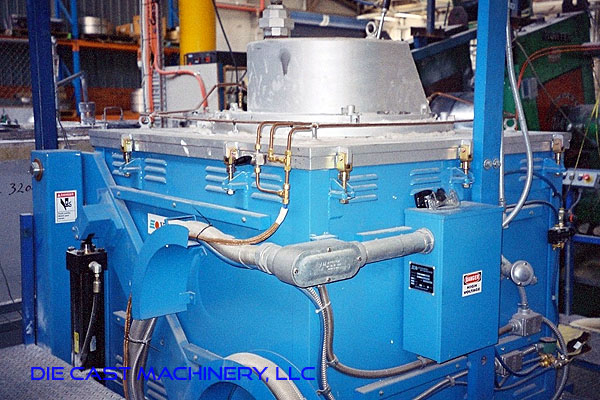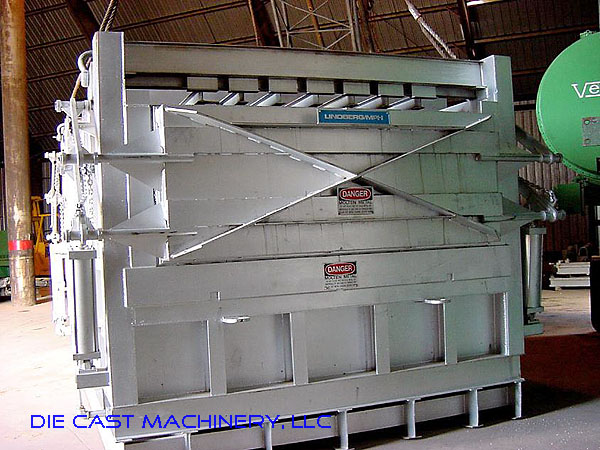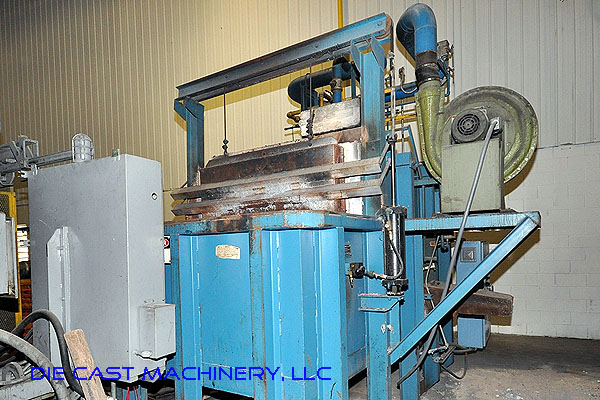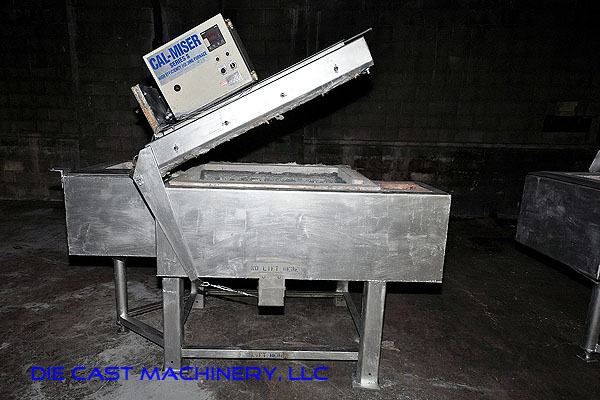Key Aluminum Melting Furnace Manufacturers
There are key manufacturers in the Aluminum Melting Furnaces and Die Casting Industry. While this page doesn't describe all of them, we hope to give you an overview and description of the major companies.
Striko-Dynarad-Westofen
 StrikoDynarad is a wholly owned subsidiary of the StrikoWestofen Group, a global leader in the melting, holding and dosing of aluminum. StrikoWestofen GmbH has been developing its know-how over more than 50 years. The first energy-saving system was patented over 50 years ago and has been continuously improved over the years.
StrikoDynarad is a wholly owned subsidiary of the StrikoWestofen Group, a global leader in the melting, holding and dosing of aluminum. StrikoWestofen GmbH has been developing its know-how over more than 50 years. The first energy-saving system was patented over 50 years ago and has been continuously improved over the years.
StrikoDynarad serves the North American and Mexican market with the full range of products and customer support for all three founder companies. As part of its increased commitment to complete customer satisfaction, StrikoDynarad has placed great emphasis on efficient customer service and spare parts accessibility.
StrikoDynarad furnaces are used in conjunction with many casting processes including high pressure die casting machines, permanent mold (gravity casting), sand casting, shell mold casting, plaster and investment casting equipment. They have carried out entire plant conversions for many companies, replacing conventional or obsolete furnaces.
Lindberg/MPH
 Lindberg has a long-standing reputation as a single-source supplier for the heat treating industry, from initial design to construction, services and genuine factory parts for heat treat industrial furnaces. For quality, value, reliability and technical support, the choice is simple.
Lindberg has a long-standing reputation as a single-source supplier for the heat treating industry, from initial design to construction, services and genuine factory parts for heat treat industrial furnaces. For quality, value, reliability and technical support, the choice is simple.
Lindberg engineers and manufactures the industry's most extensive line of thermal processing equipment and industrial furnaces.
The company has more than 75,000 industrial furnace installations worldwide, and the equipment is backed by a full range of customer support services and the most extensive replacement parts inventory in the industry. MPH, one of the world's largest manufacturers of non-ferrous furnaces, offers complete product/system design and manufacturing services.
Their world-class engineering, research and manufacturing facilities enable them to respond to virtually any non-ferrous molten metal handling request with speed and efficiency. Their design facilities include state-of-the-art Computer Aided Design (CAD) equipment interfaced with CAM process equipment, which allows them to custom-design products and do complete product/system redesign. Linberg/MPX is an SPX company. SPX Corporation is a Fortune 500 multi-industry manufacturing leader that provides its customers with highly-specialized, engineered solutions to solve critical business issues.
F.W. Schaefer, Inc.
 Frank W. Schaefer, Inc (FWS) started business as a refractory contractor in 1930, and began designing and manufacturing industrial furnaces in 1945. In the early 1970s, FWS's aluminum furnace business grew to the place that it became necessary to form two divisions within the company: A Refractory Sales and Service Division and an Industrial Furnace Division.
Frank W. Schaefer, Inc (FWS) started business as a refractory contractor in 1930, and began designing and manufacturing industrial furnaces in 1945. In the early 1970s, FWS's aluminum furnace business grew to the place that it became necessary to form two divisions within the company: A Refractory Sales and Service Division and an Industrial Furnace Division.
In 1998 the Industrial Furnace Division was separated from FWS, Inc to form a new company, Schaefer Furnaces, Inc (SFI). A combining of these two related companies took place in late 2002, forming The Schaefer Group, Inc. Two strong traditions are recombined with the FWS Division providing exceptional refractory sales and service work, and the SFI Division providing the best aluminum furnaces and molten metal delivery systems available.
Cal-Miser
 Cal-Miser Aluminum Systems was founded in 1984 by Andrew Debrey, who worked in the die casting industry for more than 50 years and later owned three casting operations in Illinois and Iowa, along with the Cal-Miser furnace brand. In November 2008, he passed away, leaving the furnace business to his son, Drew.
Cal-Miser Aluminum Systems was founded in 1984 by Andrew Debrey, who worked in the die casting industry for more than 50 years and later owned three casting operations in Illinois and Iowa, along with the Cal-Miser furnace brand. In November 2008, he passed away, leaving the furnace business to his son, Drew.
The senior Debrey started building custom furnaces in the early 1960s for his own plants, since high efficiency furnaces were not available. Also, overall furnace durability and longevity were not generally acceptable to him.
Debrey patented the design of impinging the flame directly on the metal, which transfers heat from its source directly to the metal. This also keeps the heat off the refractory walls and prolongs the life of the furnace -- unlike the old reverb furnaces, in which the refractory walls were heated to radiate heat to the metal. In summary, impinging the flame directly into the metal gives a high efficiency and durable furnace that will provide years of maintenance free production.
